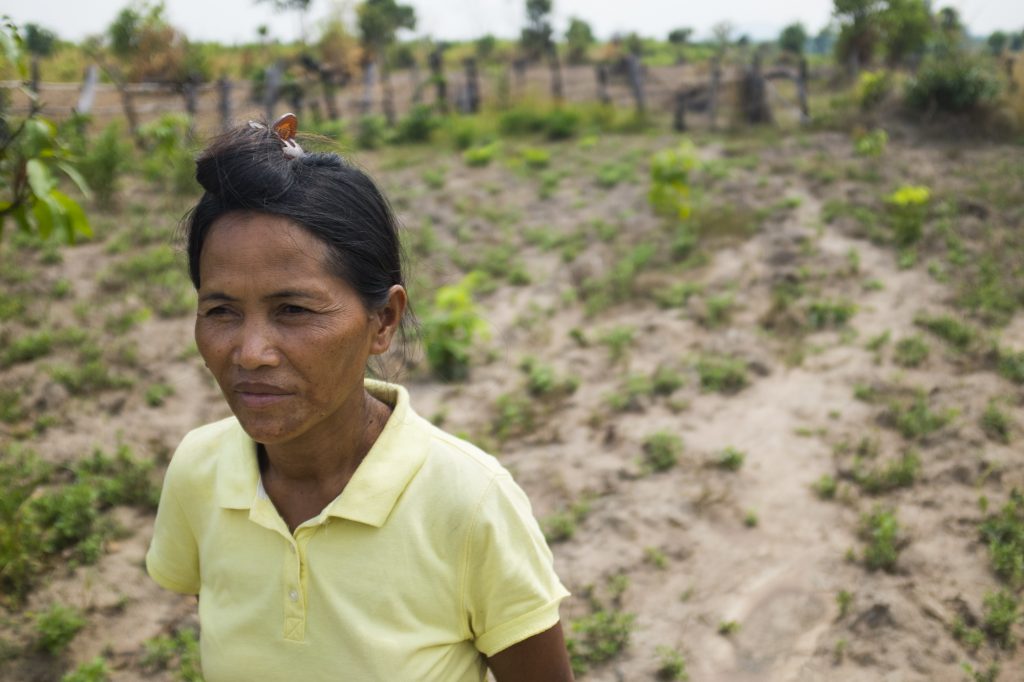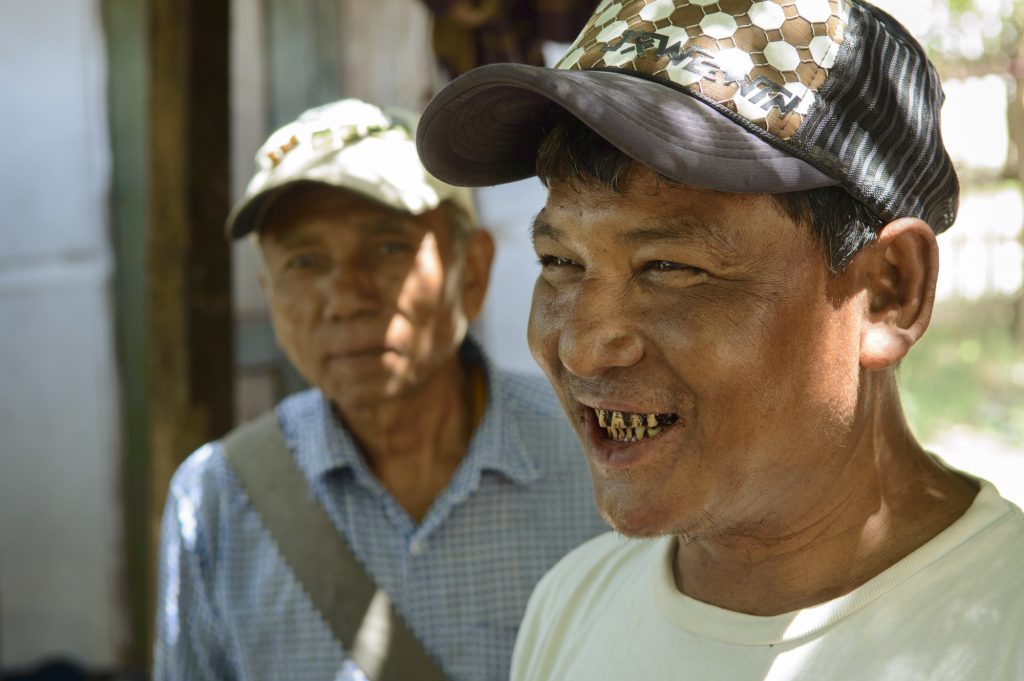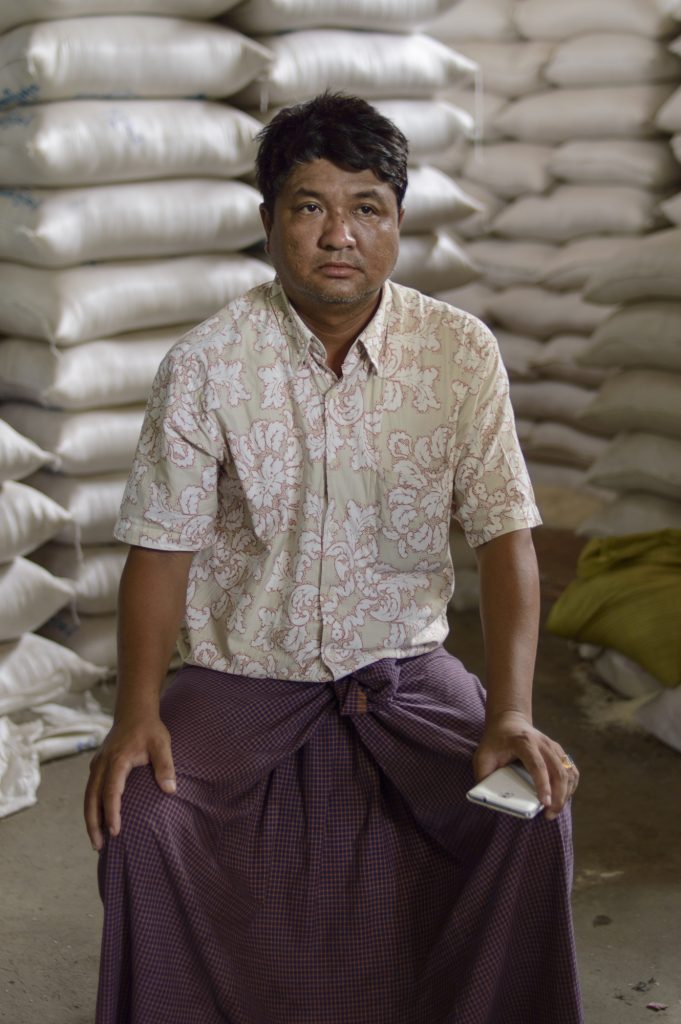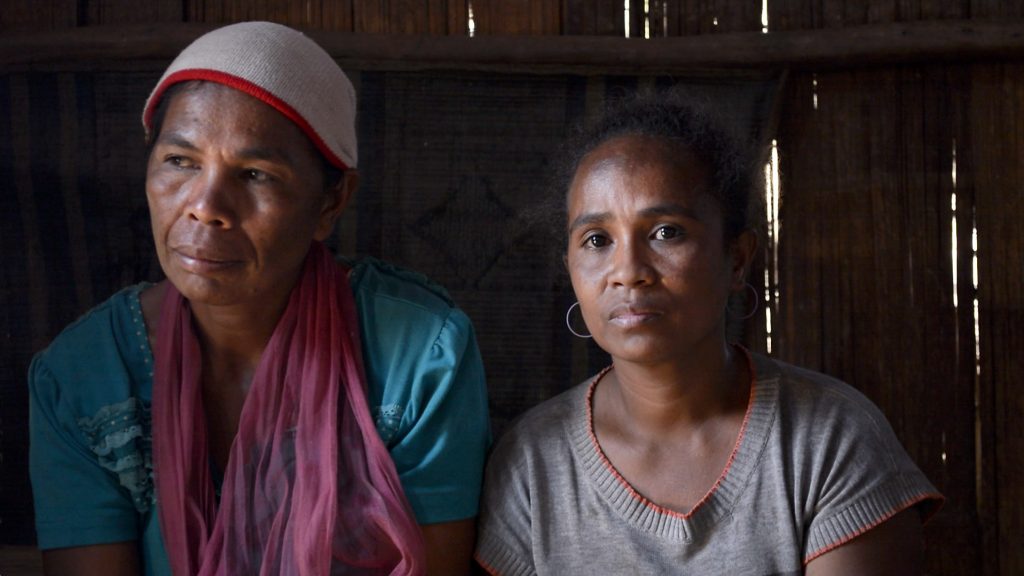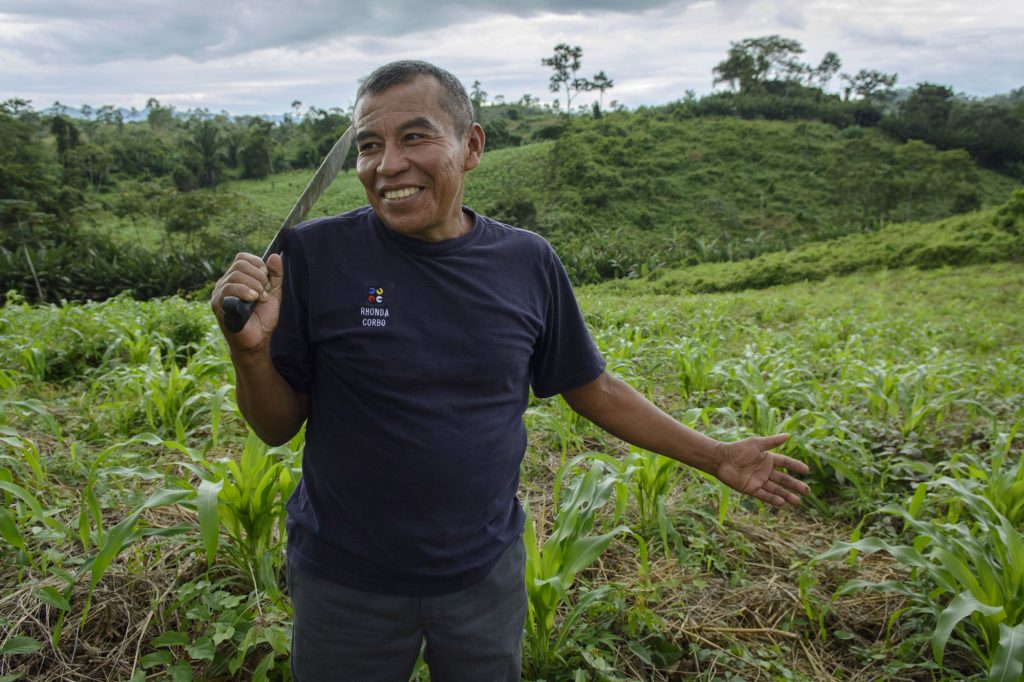Will GMOs Put an End to Hunger? Ask the Hungry
When it comes to food, few topics are as contentious and polarizing as genetically modified organisms, or GMOs. Hyperbole is rampant in this debate. GMOs are everything we love or hate, need or fear. They will feed the world—or kill us. They are perfectly safe—or maybe not. They’re linked to hundreds of thousands of Indian farmers killing themselves—or not. These “Frankencrops” are spawning “Farmageddon.” If we want the truth about GMOs, science will provide. (But the truth, according to science, is that many people don’t trust science anyway.) [1] [1] Reporting for this story was made possible with funding from the International Reporting Project, International Women’s Media Foundation, Fund for Environmental Journalism, and Sabor Journal.
The war of rhetoric over humanity’s present and future food is vitriolic and vindictive, with both sides painting it as a matter of life and death. As of now, 800 million people do not have enough to eat. The world’s population, currently at 7.3 billion, is expected to reach 9.6 billion by 2050. The world needs 60 percent more food to feed those future mouths, according to the Food and Agriculture Organization of the United Nations (FAO). Scientists widely agree: GMOs are safe, and they are key to alleviating world hunger.
But in all the debate—which is governed by scientists, activists, and pundits with strongly divergent opinions—a few critical things get lost: culture, context, and voices from the field.
Where are the farmers, shoppers, cooks, and eaters at the heart of this whole public rumpus? Where are the hungry? They often appear as mere anecdotes, as nameless dark-skinned farmers, crying naked babies, or women in generic grocery aisles. They are the anonymous poor, holding homegrown potatoes or toting bananas on their heads. Readers, then, don’t learn what the hungry think; readers learn what experts and analysts think the hungry need.
The hungry themselves—the objects of this debate—hold answers to several critical questions that ultimately affect the future of GMOs, and food in general.
Will genetically modified (GM) seeds help the poorest—and hungriest—farmers in corrupt and poorly governed countries?
I think of a farmer in Myanmar I interviewed in 2014. “We have just enough food,” Ko Kyaw Soe told me, but “we struggle very much. … Our life is only hand to mouth.” In 1989, he said, the military-led government confiscated his village farmland and loaned it to a company that later leased it to a Chinese plantation manager who hired locals to work the land. (Land-grabbing, as it is known, is a huge problem around the world: An estimated 500 million acres have been bought, taken, or leased throughout developing countries in recent years—often to the detriment of subsistence farmers.)
The farmers working Soe’s land grew watermelons for export to China. None of that fruit went to feed Soe’s village. “We had nothing,” he said. So he and many other farmers went to work as carpenters. And there was nothing anyone could do—until the Myanmar government underwent democratic reform. In 2014, the villagers returned to their fields in protest, demanding their right to farm. When Soe and I talked, the issue remained unresolved. But the new openness brought about by democracy gave Soe and his neighbors hope. He told me that he would like to try farming with a tractor, and he said he wouldn’t mind trying new seeds, aiming for higher yields. But those were far-off dreams. “We will have the chance to farm again,” he said, “only if we get back our land.” Corruption impedes new seeds of any type.
Will GM seeds flourish in the local climates, soils, and microenvironments where the world’s poorest and hungriest people live, eat, and farm?
That’s a key query in a recently published anthropological study of a highly contested GMO known as “golden rice.” It is often hailed as a potential miracle cure for vitamin A deficiency, a common cause of blindness in developing countries. In order to create the rice, researchers insert genes into existing strains, prompting them to produce beta carotene (that’s what gives the rice its golden hue).
But golden rice is 24 years in the making—it’s being tested and bred in the Philippines, but it remains years away from approval. Anti-GMO activists are often blamed for the delay. But the real reason, according to the paper’s lead author, anthropologist Glenn Stone from Washington University in St. Louis, is that the researchers haven’t been able to engineer a golden rice that grows well in the field, under local conditions. Meanwhile, the Philippines has tackled vitamin A deficiency through other means. The condition has dropped from 40 percent to 15 percent among preschool children in recent years, according to the FAO, largely due to public health campaigns, food fortification, and supplements.
Do strong cultural and economic barriers stand between GMOs and the public?
“The importance of cultural context is a core point,” Stone explained to me in an email. He led me to another GM crop that has failed to take root: Bt brinjal (transgenic varieties of brinjal, otherwise known as eggplant) in India, which has never been approved. According to Stone, that’s partly because of questions about the potential spread of transgenes to wild eggplants, which are extremely important socially and economically across India—particularly in the US$2 billion ayurvedic medicine trade. This ancient system of natural healing relies heavily on diet and the use of wild plants, including brinjal. In this case, the economy and traditional cultures trump new seeds.
If seeds produce higher yields, does that make them better?
Another challenge that Stone’s golden rice study presents relates to the concept of productivism, or the notion that overall output is prized over everything else. But researchers across disciplines are finding that just isn’t the case. As human beings, we often cherish other benefits (happiness, health, or time, for example) more than total ears of corn, grains of rice, or heads of cabbage.
Right around the time I interviewed Soe, I met a rice trader named Ko Mike. He is a wealthy man and the owner of a prominent rice company in Mandalay, Myanmar. He showed me a handful of rice—each grain plump, shiny, and round. “This is Burmese,” he said. “This one has a very good smell.” It grows slowly, in small quantities. It’s the most expensive rice, he said, and people love it. Even the poorest farmers grow and eat this—the best-tasting rice, he said. And they keep it for themselves.
Then he showed me a handful of small, pale grains. “It is not for eating,” he said. It’s cheap rice, grown en masse, and it’s shipped to China. “It is for industry, to make alcohol and snacks,” Mike said. Some of the most productive rice strains aren’t staple foods that feed the poor. In fact, the poor often don’t want to eat them. Instead, in many cases, they are nonessential crops for more privileged people.
Are GM seeds necessary to feed the hungry?
Last fall, I reported from East Timor, where I learned that many of the country’s poorest farmers were adopting new (non-GM) maize seeds after decades of growing the same traditional seeds. Use of the new seeds, developed through open pollination, aligns with the government’s policy to give precedence to non-GM seeds. The new seeds produce more than traditional seeds and thrive in local microclimates. They also taste as good or better than the old varieties, and they don’t take as long to cook. Those are key reasons villagers are making the switch. “As a farmer, I have a lot of things to do in the field,” a Timorese woman named Santina Simenel told me. “So the extra time I can use in the fields. I can repair fences and prepare the land for planting.” She is an impoverished farmer who is growing more and eating better—without GMOs.
Does a lack of infrastructure and development stand in the way of new GM seeds?
Sometimes, yes. In Cambodia, for example, only a small percentage of farmland is irrigated (roughly 8 percent). That means most farmers rely on rains, and many are limited to one crop a year. “The government has never had a proper irrigation system in place around the country,” Lim Tith, a United Nations Development Programme officer in Phnom Penh, told me in 2013. “They should have a proper master plan for irrigation.” That would allow farmers to grow multiple harvests each year, which would “solve a lot of food crises in the country,” he said. GMOs could also help, but irrigation would do far more to increase yields right now.
Do spiritual or religious beliefs interfere with acceptance of GMOs?
In Belize, I met a Maya farmer named Eladio Pop who ran a small mountain agroforestry farm that produced a lush mishmash of foods, from cacao to coconut to corn. Pop said he loved the serenity of his shady fields. He wasn’t producing as much as a commercial plantation of a similar size would, but his plants made him feel close to God. Farming is “a very special gift God gives us,” Pop told me. He wanted to plant his own seeds, and he didn’t want to use fertilizers or pesticides that didn’t come from the environment around him.
“The main thing for human beings is: Learn to plant your food and get to know where the food comes from.” It would be easy to characterize Pop as an anti-science, anti-GMO Luddite, simple as that. But his distaste for GM seeds is far more nuanced. It has less to do with a fear of science than with the spiritual ties he has to these Central American hills, where centuries of Maya before him farmed in the style he does today. “Without this forest and plants,” Pop said, “we are nothing.” If spirituality can shape public policy in the U.S., we must expect it to be equally influential elsewhere.
In the end, it doesn’t matter why Pop opposes GMOs so much as the fact that he does. His reasons are cultural and deeply held. That’s his choice. Others choose differently. There is a middle ground in this overwhelmingly two-sided debate: people who center their arguments not on the pros and cons of GMOs, per se, but on humanity’s right to choose.
If GMOs become widely—even freely—available, should (or will) the hungry still have choices?
Last year when I interviewed Rwanda’s minister of agriculture and animal resources, Gerardine Mukeshimana, she told me choice is a critical right. GMOs have not yet entered Rwanda, she said, but they might one day. The country should be prepared, with safety regulations in place, and the public must be informed, she said. People must have the right to choose. “To my view, it’s important that the consumer knows what he’s buying because it’s his money at the end of the day.”
So much stands between creating a new seed and getting farmers to plant it. So much stands between the idea of feeding the world and the reality of doing it. If researchers can’t get seeds to farmers, if farmers decide not to grow new seeds, if consumers don’t buy foods grown from new seeds, or they decide they don’t like the taste—new seeds won’t feed the hungry. And they won’t feed the world.


































